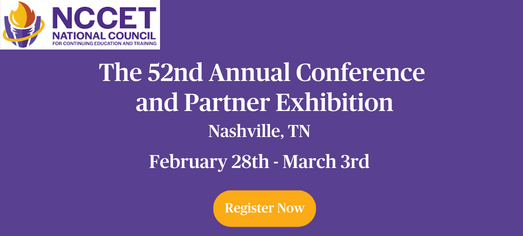Published on
Walking into the New Era of Higher Ed with an Innovative Mindset

Change can be scary, and not everyone will be onboard with it at first, but change is necessary to meet an institution’s goals and mission. As learner demographics continue to shift towards more nontraditional learners, higher ed must expand its mindset to find ways to meet these learner needs. This will require leaders to include more innovation into their ideas and strategies. In this interview, Kimberly Moore discusses why this mindset is critical moving forward, some first-step actions leaders can take and the impact innovation will have on the institution and its learners.
The EvoLLLution (Evo): Why is it important for higher ed leaders to have an innovative mindset?
Kimberly Moore (KM): It really goes back to the idea that change is inevitable. Your institution’s culture must embrace and foster that innovative mindset and be supported by campus champions. Not only do the champions have to carry the message, but they must do it in a way that inspires others. That innovative mindset allows you to try new things, make mistakes and pivot. With the pandemic, that was an absolute requirement, and that requirement hasn’t changed now that we’ve adjusted to life post pandemic. Leaders must be very open to being uncomfortable going into this new space of innovation. When they do, it breeds confidence, flexibility and perseverance.
Evo: How can leaders overcome the obstacles to innovation, especially in the change-adverse postsecondary space?
KM: Leaders first need to establish their risk threshold because not everyone will have the same one, and that’s okay. There also needs to be a safe zone established for innovation. It can’t just be talked about but lived and understood by the campus community. Everyone, regardless of their role, must have the freedom to be part of reimagining the future. The third element is communication. Leaders have to be the first ones to tell/share their college’s innovation success stories and the impact that it will have throughout their campus community. Lastly, leaders must be open to what possibilities exist when you adopt an innovation mindset.
Evo: What’s some of the low-hanging fruit that leaders can explore when it comes to transferring their revenue model?
KM: First, inventory your wins and successes. What have you done well in terms of projects, programs, grants, partnerships, etc.? Where can you scale successful efforts within the organization? What opportunities exist to go beyond the campus that can lead to collaborations with local, state or national groups? For example, one of the biggest needs right now nationwide is workforce. So, it could mean asking yourself, “How do you partner with business to become the talent engine for them?” This might require reimagining the corporate college as providing services directly to business. Remember, it’s not just about classroom instruction and training—your college possesses other strengths that can lead to new opportunities to capitalize on.
Evo: How can leaders leverage that innovative mindset to ensure student engagement is relational instead of just a one-time transaction?
KM: Students will immediately pick up on transactional vs. relational engagement. That said, here at TCC, we focus on creating and maintaining a culture of care. We’ve embedded this approach into everything we do. It not only focuses on what resources students’ needs, the level of engagement and what matters to them most—we take it a step further. Our commitment it to understand the personas. In essence, who are we working with, and how can we create a tailored experience for these personas? They’re not your traditional 18-year-olds anymore when you take into consideration enrollment and the increase in workforce students. As a matter of fact, we’ve seen a 162% increase in our workforce students at our institution.
Evo: How can leaders leverage an innovative mindset to ensure long-term sustainability and success for their institution?
KM: One way to ensure long-term sustainability is to adopt models and frameworks that aren’t susceptible to a single person driving success or responsible for the outcomes. You need to create models that are flexible enough to evolve as the times and circumstances change. It’s also important to be mindful of the best practices that exist in the space and build on them. In terms of scalability, I encourage leaders to ideate around innovation that’s not just for the moment or solely your community, to consider opportunities that allow you to scale outward. Lastly, it’s important to build capacity in your system. When you follow these guidelines, you can be assured that you’ll have a pipeline for innovation.
Evo: Is there anything that you want to add about shifting to that innovative mindset within this new era of higher education?
KM: Innovation can be scary. When your institution decides this is a path that it wants to pursue, make sure the conversation is one that everyone is engaged in and contributing to. When everyone’s voice is heard, they can all walk away feeling like they’re a part of moving the institution forward—it’s less scary when you do it together.
This interview is edited for length and clarity.
You can hear Kim speak on this topic further at the NCCET Conference. For more info, click here.

Author Perspective: Administrator
Author Perspective: Community College



